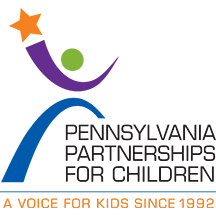
The Biden-Harris Administration, through the U.S. Department of Health and Human Services (HHS)’s Centers for Medicare & Medicaid Services (CMS), announced policies for the Affordable Care Act Marketplaces that make it easier for low-income people to enroll in coverage, provides states the ability to increase access to routine adult dental services, and sets network adequacy standards for the time and distance people travel for appointments with in-network providers. Finally, the rule will standardize certain operations across the Marketplaces to increase reliability and consistency for consumers. The 2025 Notice of Benefit and Payment Parameters final rule builds on the Administration’s previous work expanding access to quality, affordable health care and raising standards for Marketplace plans nationwide.
“More than 21 million Americans signed up for high-quality, affordable health care coverage through the ACA Marketplaces in 2024. We want to build on this success to make Marketplace plans even better,” said HHS Secretary Xavier Becerra. “This rule will allow coverage of routine dental benefits for the first time, expand requirements to ensure reliable access to health care providers, and ensure consumers with lower incomes can sign up for coverage when they need it.”
“Access to affordable, quality health care options remain a concern across the country and a top priority for CMS,” said CMS Administrator Chiquita Brooks-LaSure. “This rule includes groundbreaking ways to access health care services – such as addressing barriers for routine adult dental coverage for the first time and including considerations for how far people travel to see a health care provider. At CMS, we continue to explore ways to help Americans access high-quality coverage through the ACA Marketplaces.”
Increasing Access to Health Care Services
Adult Dental Services
CMS has expanded access to dental benefits by finalizing measures to allow states the option to add routine adult dental services as an essential health benefit (EHB). For the first time, and starting on January 1, 2027, every state will be able to update their EHB-benchmark plans to include routine non-pediatric dental services, such as cleanings, diagnostic X-rays, and restorative services like fillings and root canals, through the EHB-benchmark application process beginning in 2025.
Network Adequacy
The final rule creates more consistent, nationwide standards on how far and how long a consumer must travel to see various types of providers in State Marketplaces and State-based Marketplaces on the Federal Platform (SBM-FPs). State Marketplaces and State-based Marketplaces must review a plan’s network information prior to certifying any plan as a qualified health plan (QHP), consistent with the reviews conducted by the Federally-facilitated Marketplaces (FFMs).
Making It Easier to Enroll in Coverage
Special Enrollment Periods
The rule extends the special enrollment period (SEP) for consumers with household incomes at or below 150% of the FPL (for the 2025 plan year, $38,730 for a family of three) to enroll in coverage in any month rather than only during Open Enrollment. Previously, this SEP was only available when enhanced subsidies under the IRA were available.
The rule also aligns the dates of Open Enrollment periods across almost all Marketplaces to generally begin on November 1 and end no earlier than January 15, with the option to extend the Open Enrollment period beyond January 15.
Additionally, the rule aims to prevent coverage gaps for those transitioning between different Marketplaces or from other insurance coverage by allowing those selecting coverage during certain SEPs to receive coverage beginning the first day of the month after the QHP is selected, as opposed to coverage beginning at a later date if the consumer enrolls between the 15th and the end of the month.
Streamlining the Enrollment Process
This rule includes multiple policies to standardize operations among the Federally-facilitated and State-based Marketplaces to ensure a more streamlined consumer experience, such as requiring Marketplaces to have live call center representatives available during call center hours of operation to assist consumers with QHP application submission and enrollment, generally holding Open Enrollment from November 1-January 15 (with the option for Marketplaces to extend Open Enrollment to a later date), and automatically re-enrolling people who are enrolled in a catastrophic plan for the next year, in order to prevent gaps in coverage.
For more information on the final rule, see the fact sheet at: https://www.cms.gov/newsroom/fact-sheets/hhs-notice-benefit-and-payment-parameters-2025-final-rule
Click here to view the final rule: https://www.cms.gov/files/document/cms-9895-f-patient-protection-final.pdf



